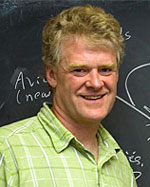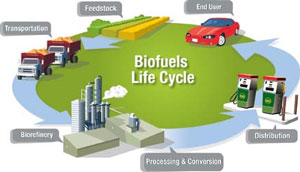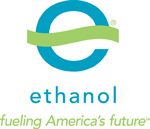 A 1999 Ford Mustang GT has been converted to run on the alternative fuel bend of 85 percent ethanol. The engine was changed by the owner, Steve Shrader of Mount Holly, NC.
A 1999 Ford Mustang GT has been converted to run on the alternative fuel bend of 85 percent ethanol. The engine was changed by the owner, Steve Shrader of Mount Holly, NC.
“The Mustang ran great for more than a year,” noted Shrader. “In the quest for more horsepower, we pulled the engine out of the car to see just how far we could push the horsepower level out of a 4.6L Mustang engine which is street legal and still has a cold A/C. The most recent results were staggering. Running on summer blend E85, the car made 640 horsepower, measured at the rear wheels. With a typical 15 percent driveline loss, that is about 750 hp, if measured at the engine, compared to Ford’s dismal factory output of 260 hp.”
Although this car is not a daily driver nor built to be a commuter car, Shrader said it makes a nice weekend cruising toy and it still makes trips to the dragstrip for fun runs.
Shrader added, “The great results are largely contributed to E85’s 105 octane and cooler-burning characteristics, which allow us to really push the engine beyond what a gasoline engine can safely handle.”
Automobile manufacturers do not recommend converting a gasoline powered vehicle to run on E85.


 In a
In a  The forum will feature both agricultural and food business leaders, including representatives from the National Corn Growers Association, Missouri Farm Bureau, the American Bakers Association, and the Food and Agricultural Organization.
The forum will feature both agricultural and food business leaders, including representatives from the National Corn Growers Association, Missouri Farm Bureau, the American Bakers Association, and the Food and Agricultural Organization. Five Midwestern states have joined together to develop an electric transmission system that should help promote wind energy in the region.
Five Midwestern states have joined together to develop an electric transmission system that should help promote wind energy in the region. Officials in Parkersburg, Iowa recently received a check for $10,520 to help them rebuild their town destroyed by an F5 tornado back on May 25, 2008.
Officials in Parkersburg, Iowa recently received a check for $10,520 to help them rebuild their town destroyed by an F5 tornado back on May 25, 2008. The money will go toward buying biodiesel that runs the equipment that continues to cleanup and rebuild the town. If you remember the photo on the left from right after the storm happened at the end of May, the town doesn’t look like that anymore. But there’s still plenty of work to do. It’s nice to know that biodiesel will be part of that effort.
The money will go toward buying biodiesel that runs the equipment that continues to cleanup and rebuild the town. If you remember the photo on the left from right after the storm happened at the end of May, the town doesn’t look like that anymore. But there’s still plenty of work to do. It’s nice to know that biodiesel will be part of that effort. Following the route of the famous Cannonball Run of the 1970s (made even more famous by the movie in 1981), a pair of advertising copywriters will attempt to go from the East Coast to the West Coast… entirely non-stop and entirely on biodiesel.
Following the route of the famous Cannonball Run of the 1970s (made even more famous by the movie in 1981), a pair of advertising copywriters will attempt to go from the East Coast to the West Coast… entirely non-stop and entirely on biodiesel. The latest investments bring the company’s total funding to substantially more than $100 million, and Sapphire is now financed to scale up its production facilities to full commercial feasibility.
The latest investments bring the company’s total funding to substantially more than $100 million, and Sapphire is now financed to scale up its production facilities to full commercial feasibility.  “Our discovery is one potential avenue for research to facilitate turning inedible cellulosic biomass, including wood, grass, and various waste materials, into ethanol,” said Dartmouth engineering professor Lee Lynd. “In the near term, the thermophilic bacterium we have developed is advantageous, because costly cellulase enzymes typically used for ethanol production can be augmented with the less expensive, genetically engineered new organism.”
“Our discovery is one potential avenue for research to facilitate turning inedible cellulosic biomass, including wood, grass, and various waste materials, into ethanol,” said Dartmouth engineering professor Lee Lynd. “In the near term, the thermophilic bacterium we have developed is advantageous, because costly cellulase enzymes typically used for ethanol production can be augmented with the less expensive, genetically engineered new organism.” The Biomass Program works with industry, academia and national laboratory partners on a portfolio of research in biomass feedstocks and conversion technologies. Through research, development, and demonstration efforts geared at the development of integrated biorefineries, the Biomass Program helps transform the nation’s renewable and abundant biomass resources into cost competitive, high performance biofuels, bioproducts, and biopower. Among its goals is focusing research and development efforts to ensure that cellulosic ethanol is cost competitive by 2012.
The Biomass Program works with industry, academia and national laboratory partners on a portfolio of research in biomass feedstocks and conversion technologies. Through research, development, and demonstration efforts geared at the development of integrated biorefineries, the Biomass Program helps transform the nation’s renewable and abundant biomass resources into cost competitive, high performance biofuels, bioproducts, and biopower. Among its goals is focusing research and development efforts to ensure that cellulosic ethanol is cost competitive by 2012. Corn grower associations in South Dakota and Kansas have joined with the
Corn grower associations in South Dakota and Kansas have joined with the